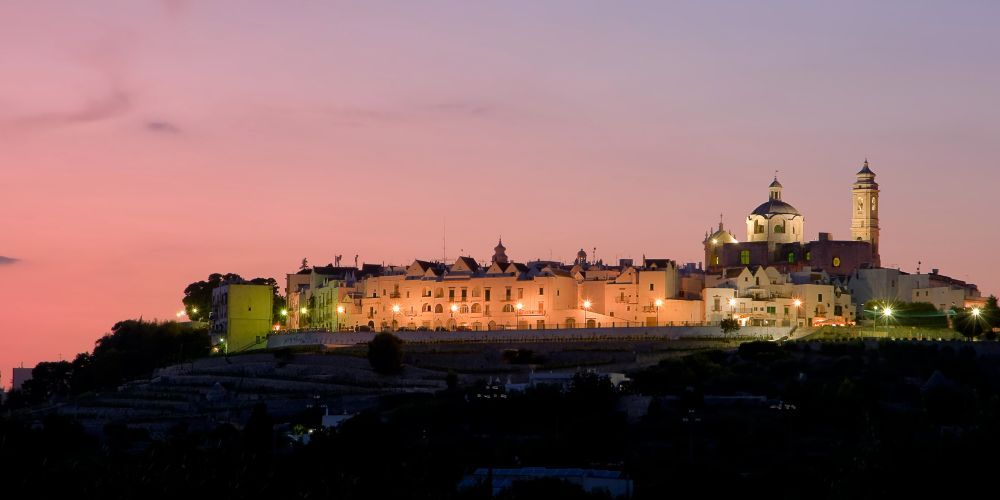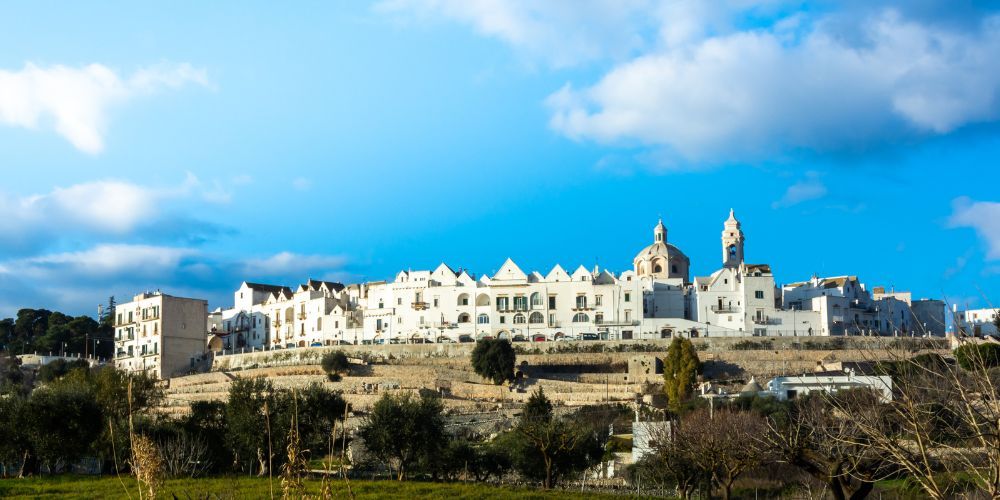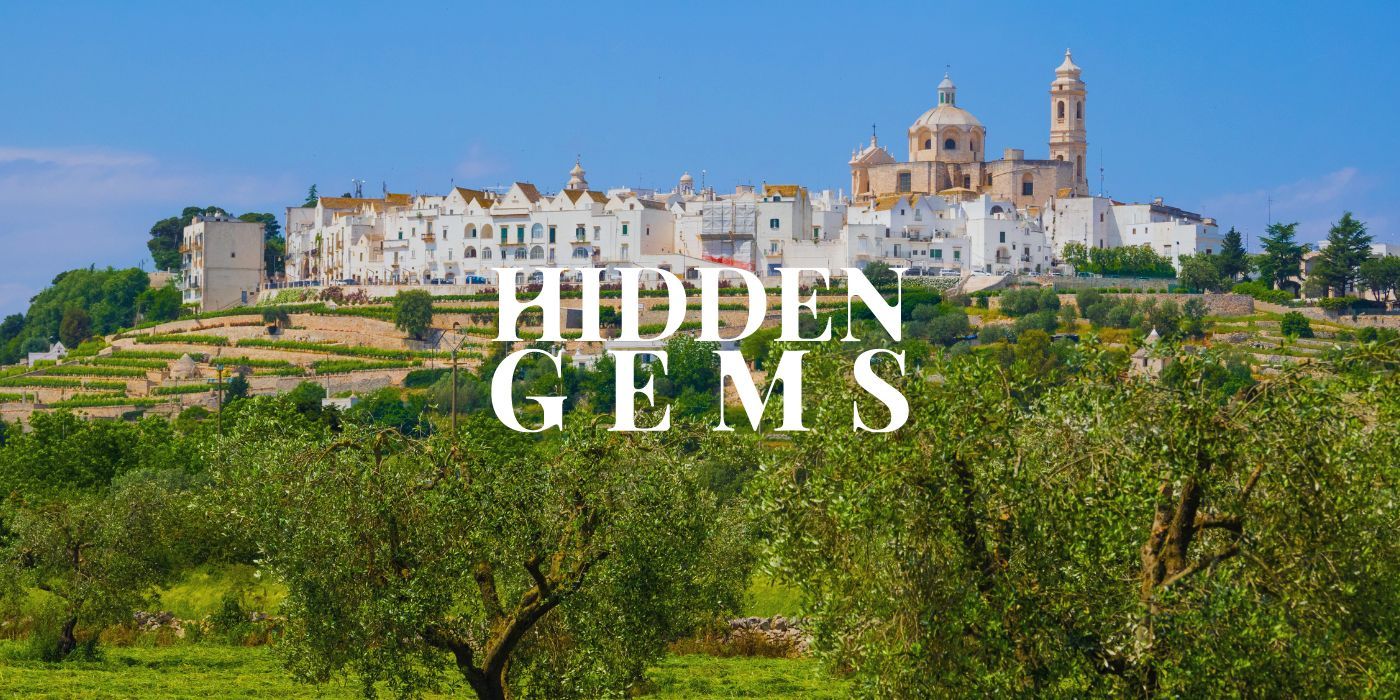In the Apulian hinterland, just a stone's throw from the popular Alberobello and lovely Martina Franca, stands a village where time seems to be hanging. It is one of the so-called white towns of Apulia and one of the most beautiful towns to explore in the south: in this article let's find out what to see in Locorotondo!
Locorotondo is one of the most iconic places in Itria Valley, the fantastic land of trulli in Apulia, and despite its ancient origins even dating back to the 10th or 11th century B.C., in Greek era, it was only in 1195 that there was the first written record referring to the name Locus Rotondus, or Round Place. This was the time of Swabian rule, when this land was just a possession of the Benedictine monastery of Santo Stefano, located near Monopoli.
The town saw the passage of the Angevins and several lineages, some of which even came to divide the territory in half. It is worth mentioning the Carafa, a powerful family that fortified the village around the 16th century. Of the walls and castle, however, no trace remains because they were demolished in the 19th century.
What is Locorotondo today, however, is certainly worth a visit, and perhaps more than one. U Curdùnne, as Locorotondo is called by the locals, is undoubtedly one of the most charming villages in Apulia.

What to see in Locorotondo, Apulia, Italy: 5 things not be missed

There is really so much to say about this village with such an emblematic name. Rotondo (round, in English), just saying, is precisely the shape this place adopted when it expanded up the hill around the 13th century.
The historic old town, which still stands there, is white and bright, punctuated by the colors of the flowers that protrude from the balconies. All around Locorotondo, farm stays, trulli and vineyards: in fact, the well-known Wine Route, which we will discuss later, passes right through here as it enchants visitors to this piece of hinterland within the beautiful setting of Itria Valley.
So, let's find out what absolutely see in Locorotondo, a brief guide dedicated to 5 unmissable places of one of the white towns of Apulia!
5. The maze of narrow alleys in the centre among the typical cummerse
Before we even talk about architecture, buildings and beauties that really tell a lot about this place, our suggestion is to lose yourself in the beautiful streets of the centre - or rather, its awesome alleys!
The whiteness of the houses and alleys makes Locorotondo ethereal, almost magical. So much so that the town has been honored as one of the most beautiful villages in Italy along with nearby Cisternino, another jewel to visit on your next trip to Apulia.
And it is precisely on these houses that we would like to focus our attention. These houses with sloping roofs, in fact, are called cummerse and are typical of the Itria Valley, with particular concentration in Locorotondo. The roofs, made of limestone slabs, the calchiarelle, are designed in this way to collect the little rainwater. In fact, the cummerse have been for private use since their origin, now 700 years ago. Precisely because of this, they are even older than the more famous trulli.
4. The Church of San Giorgio Martire, arisen from the ruins of two other churches
One of the most interesting buildings in Locorotondo is certainly the Church dedicated to San Giorgio Martire (St. George Martyr). Built between the 18th and 19th centuries, it actually stands on the ruins of two other churches, one from the 12th and the other from the 16th century. Walking past the church, it is in fact possible to see the ancient ruins of one of the two through the glass slabs.
The façade of the church is in the neoclassical style, and pointing upward toward the gable, it is possible to admire St. George and the Dragon.
In the interior, the neoclassical style prevails, although the various interior chapels are adorned with a variety of Baroque works.
3. Piazza Vittorio Emanuele, one of the most elegant squares
One of the most beautiful squares in the historic center is undoubtedly Piazza Vittorio Emanuele, formerly Piazza Castello. The square is a small concentration of 19th-century elegance. The smooth pavement is walked on every day by locals and tourists alike and gives a cheerful glimpse of the town's life.
In the middle of the square there's the solemn War Fallen Memorial, but what may be of even greater interest to you is that the local tourist office is located here: there's no better starting point to experience your adventure discovering Locorotondo and the magic of Apulia!
2. The Church of San Nicola, a frescoed jewel
Smaller and more hidden than the Church of San Giorgio, the Church of San Nicola (St. Nicholas) is undoubtedly worth a visit. It is close to its better-known sister, right in the heart of the historic centre, and was built about two centuries earlier, in the 17th century.
Perhaps the simplicity of the exterior may mislead: but it is on the inside that this jewel shows itself in all its beauty.
In fact, if you raise your eyes to the ceiling, you will be able to see an admirable cycle of frescoes narrating the life of St. Nicholas of Myra. as well as some artistic reliefs found right near Locorotondo far older than the church itself. If you want to best immerse yourself into the myth of the saint of all people, the icon that inspired no less than even Santa Claus, we recommed you taking a stop in Bari traveling across Apulia and visiting the evocative Basilica di San Nicola's crypt!
Book now your guided visit to Basilica di San Nicola1. Palazzo Morelli, triumph of Baroque style
A few steps from the Church of San Giorgio you can also see Palazzo Morelli, one of the most beautiful Baroque palaces in the village of Locorotondo. Right next to the Civic Tower, another must-see building, this little jewel stands out for the grandeur of its facade and the richness of its portal, which consists of a stone archway surrounded by scrolls and acanthus leaves as decorations. In the center, the family coat of arms stands out. Next to the portal, flowered balconies with wrought-iron railings, typical aestehtic elements of southern Italian architecture, really catch the eyes attention against the white of the buildings.
Where is Locorotondo and how to get there?

Locorotondo is placed in the heart of Apulia and you can reach it easily both travelling from Bari or Brindisi. Between white buildings, beautiful landscapes and delicious flavors, U Curdùnne is truly a must-see place. Let yourself be amazed and inspired!
From Bari (approximately 60 km): around 1 hour by car (SS 16 and SS 172dir) or about 1 hour and 30 minutes by bus. From Brindisi instead (approximately 70 km): around 1 hour by car (SS 379 and SS 172dir) or about 2 hours by bus ride (taking into account at least one interchange at least. For further information about rides and schedule, please refer to the website for local transport services.
Locorotondo can also be easily reached as a tourist destination within travel packages that include other unique and unmissable locations, such as Alberobello and Polignano a Mare. Check out this amazing way to travel discovering Apulia!
Book now your one day trip discovering the gems of ApuliaWhat to see in Locorotondo: Trullo in Contrada Marziolla, one of the eldest in Apulia

We all know that, there ain't no trip to Apulia withour trulli. Not far from the historic centre there is Contrada Marziolla. Here it is possible to see the oldest trullo in the entire Itria Valley, which dates back to 1559, as reported by the lintel at the entrance.
Once simple shelter for tools and animals, today's a true tourist destination privately owned, so which can be visited only by reservation, that enhances the territory, its landscape and its historical roots strongly related to earth.
Locorotondo, amazing stop of the quality Wine Route in Apulia

One cannot leave Locorotondo without first diving into its enogastronomic delights. And speaking of, in Italy the ways of wine are usually limitless.
In particular, Locorotondo is one of the stops on the DOC Wine Route (where DOC stands for Denomination of Controlled Origin), which connects, among beautiful vineyards and rich wineries, the villages of Locorondo and Martina Franca; here wines are white, fresh and delicious.
Locorotondo DOC is produced in Fasano, Cisternino, and obviously right here in the Locus Rotondus. Martina Franca DOC, on the other hand, is native to Alberobello, Ostuni, Crespiano, Ceglie Messapica, and certainly the namesake village. These excellent wines should be accompanied by excellent delicacies of the local culinary art, which we're going to discover next.
Delicacies of the Locorotondo local cuisine

Apulia, and not just the village of Locorotondo, is known in every corner of the world for its extraordinary cuisine.
Even here, however, every place has its own typical dishes. Do you want to discover the authentic typical dishes from Locorotondo? Here are a few examples to try for a lunch or a dinner like a local in this splendid white town. Enjoy your town!
1) The Gnumerèdde suffuchète, the most well-known dish, lamb tripe rolls, cooked for a long time in terracotta pans;
2) The Macco con verdure, a dish made with white broad beans cooked and then beaten with a drizzle of olive oil; a kind of puree which is usually served with wild chicories;
3) The Tridd, handmade egg pasta seasoned with pecorino cheese and parsley and then served in the broth.
About the author
Written on 18/07/2024



Elisa Borgato
Discover together with us what to see in Locorotondo, an unmissable village to visit in the land of trulli on your next holiday to Apulia!